| Listing 1 - 10 of 65 | << page >> |
Sort by
|
Book
ISBN: 9782874490835 2874490830 Year: 2009 Volume: *31 Publisher: Bruxelles: Les Impressions nouvelles,
Abstract | Keywords | Export | Availability | Bookmark
 Loading...
Loading...Choose an application
- Reference Manager
- EndNote
- RefWorks (Direct export to RefWorks)
Olivier Smolders représente un des visages les plus novateurs et les plus cohérents du cinéma belge contemporain. Spécialiste du court-métrage, marqué par l'esprit de dérision comme par le goût du fantastique, Smolders est aussi, dans la grande tradition de Chris Marker, Godard ou Tarkovski, un véritable écrivain. Poursuivant sa réflexion sur les arts et le cinéma, Olivier Smolders rassemble dans cet essai un florilège de fragments et de notes de travail qui ont accompagné la réalisation de Voyage autour de ma chambre, un film qui interroge d'une façon poétique la difficulté de chacun à trouver sa juste place au sein du monde. Le plaisir d'écrire avec des images et des sons s'est donc doublé de celui qui consiste à déplier parallèlement le thème du voyage selon un rythme, une structure et une économie propres à l'espace littéraire. Chemin faisant, ce livre, abondamment illustré, emprunte de nombreux sentiers de traverse qui autorisent autant de lectures diagonales.
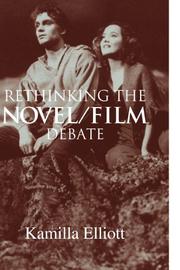
ISBN: 9780521107501 Year: 2009 Publisher: Cambridge : Cambridge University Press,
Abstract | Keywords | Export | Availability | Bookmark
 Loading...
Loading...Choose an application
- Reference Manager
- EndNote
- RefWorks (Direct export to RefWorks)
The relationship between books and film has been one of the key topics of cinema studies. Much of this criticism, however, has been inherited from eighteenth-century debates on poetry and painting and thus has fostered false and limiting paradigms in which words and pictures are opposed. Rethinking the Novel/Film Debate historicizes and critiques the central paradigms of this debate. Testing theory against practice, and uncovering the hidden agendas, Kamilla Elliot creates alternative critical models that can be applied to the novel/film issue in an effort to transform the field for future inquiry. In the process, she mounts a major critique of novel theory and film history and theory, demonstrating how rivalries have shaped and falsified each discipline when considered separately.
82:791.43 --- Literatuur en film --- 82:791.43 Literatuur en film --- Adaptations cinématographiques --- Cinéma et littérature
Book
ISBN: 9780195306675 Year: 2010 Publisher: New York ; Oxford : Oxford University Press,
Abstract | Keywords | Export | Availability | Bookmark
 Loading...
Loading...Choose an application
- Reference Manager
- EndNote
- RefWorks (Direct export to RefWorks)
To understand American popular culture, we need to come to grips with the enormous role that television has played in shaping that culture over the past sixty years. In this timely and provocative book, Jason Mittell provides students with a uniquely thorough look at the medium of television.Exploring television at once as a technological medium, an economic system, a facet of democracy, and a part of everyday life, this landmark text uses numerous sidebars and case studies to demonstrate the past, immediate, and far-reaching effects of American culture on television--and television's influence on American culture. Arranged topically, the book provides a broad historical overview of television while also honing in on such finer points as the formal attributes of its various genres and its role in gender and racial identity formation.Replete with examples, this pedagogically rich text includes many end-of-chapter case studies and narratives with suggestions for further reading--and, appropriately, viewing. Illustrations and photographs--primarily DVD grabs--contextualize historical footage and older television programs that may not be familiar to younger students.
Télévision --- Aspect social --- Television broadcasting --- 82:791.43 --- 82:791.43 Literatuur en film --- Literatuur en film --- Social aspects
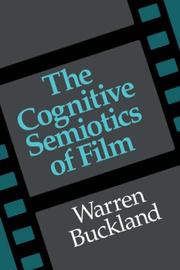
ISBN: 9780511613142 9780521780056 9780521037150 051101368X 9780511013683 0511034725 9780511034725 0521780055 1280429593 9781280429590 0511049978 9780511049972 0511613148 0521037158 1107119928 9781107119925 0511302495 9780511302497 0511155409 9780511155406 0511175213 9780511175213 Year: 2000 Publisher: Cambridge ; New York : Cambridge University Press,
Abstract | Keywords | Export | Availability | Bookmark
 Loading...
Loading...Choose an application
- Reference Manager
- EndNote
- RefWorks (Direct export to RefWorks)
In The Cognitive Semiotics of Film, Warren Buckland argues that the conflict between cognitive film theory and contemporary film theory is unproductive. Examining and developing the work of 'cognitive film semiotics', a neglected branch of film theory that combines the insights of cognitive science with those of linguistics and semiotics, he investigates Michel Colin's cognitive semantic theory of film; Francesco Casetti and Christian Metz's theories of film enunciation; Roger Odin's cognitive-pragmatic film theory; and Michel Colin and Dominique Chateau's cognitive studies of film syntax, which are viewed within the framework of Noam Chomsky's transformational generative grammar. Presenting a survey of cognitive film semiotics, this study also re-evaluates the film semiotics of the 1960s, highlights the weaknesses of American cognitive film theory, and challenges the move toward 'post-theory' in film studies.
82:791.43 --- 82:791.43 Literatuur en film --- Literatuur en film --- Motion pictures --- Semiotics --- Semiotics. --- Motion pictures - Semiotics
Book
ISBN: 9782200355487 2200355483 Year: 2008 Volume: *4 Publisher: Paris: Armand Colin,
Abstract | Keywords | Export | Availability | Bookmark
 Loading...
Loading...Choose an application
- Reference Manager
- EndNote
- RefWorks (Direct export to RefWorks)
Film genres --- Genres cinématographiques --- Genres cinematographiques --- 82:791.43 --- Literatuur en film --- 82:791.43 Literatuur en film --- Genres cinématographiques
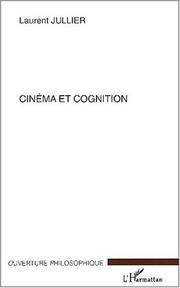
ISBN: 2747523276 9782747523271 Year: 2002 Publisher: Paris : L'Harmattan,
Abstract | Keywords | Export | Availability | Bookmark
 Loading...
Loading...Choose an application
- Reference Manager
- EndNote
- RefWorks (Direct export to RefWorks)
82:791.43 --- 82:791.43 Literatuur en film --- Literatuur en film --- Cognition --- Motion pictures --- Psychology --- Philosophy --- Psychological aspects --- Cognition. --- Philosophy. --- Psychological aspects.
Book
ISBN: 9780814745311 9780814763988 Year: 2013 Publisher: New York, N.Y. New York University Press
Abstract | Keywords | Export | Availability | Bookmark
 Loading...
Loading...Choose an application
- Reference Manager
- EndNote
- RefWorks (Direct export to RefWorks)
Mass communications --- Sociology of culture --- Télévision --- Television programs --- Émissions --- Aspect social --- Aspect politique --- Social aspects --- Political aspects --- 82:791.43 --- Literatuur en film --- 82:791.43 Literatuur en film --- Télévision --- Émissions
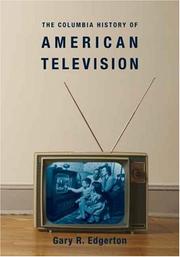
ISBN: 9780231121644 0231121644 9780231121651 Year: 2007 Volume: *3 Publisher: New York Columbia University Press
Abstract | Keywords | Export | Availability | Bookmark
 Loading...
Loading...Choose an application
- Reference Manager
- EndNote
- RefWorks (Direct export to RefWorks)
Industrie de la télévision --- Television broadcasting --- Histoire --- History. --- Social aspects --- 82:791.43 --- Literatuur en film --- 82:791.43 Literatuur en film --- History --- United States --- Histoire. --- Industrie de la télévision
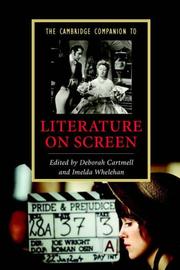
ISBN: 9780521614863 9780521849623 0521849624 0521614864 1139001442 1139817469 9781139001441 Year: 2007 Publisher: Cambridge Cambridge university press
Abstract | Keywords | Export | Availability | Bookmark
 Loading...
Loading...Choose an application
- Reference Manager
- EndNote
- RefWorks (Direct export to RefWorks)
This Companion offers a multi-disciplinary approach to literature on film and television. Writers are drawn from different backgrounds to consider broad topics, such as the issue of adaptation from novels and plays to the screen, canonical and popular literature, fantasy, genre and adaptations for children. There are also case studies, such as Shakespeare, Jane Austen, the nineteenth-century novel and modernism, which allow the reader to place adaptations of the work of writers within a wider context. An interview with Andrew Davies, whose work includes Pride and Prejudice (1995) and Bleak House (2005), reveals the practical choices and challenges that face the professional writer and adaptor. The Companion as a whole provides an extensive survey of an increasingly popular field of study.
Film adaptations --- Adaptations cinématographiques --- History and criticism. --- Histoire et critique --- 82:791.43 --- Literatuur en film --- 82:791.43 Literatuur en film --- Adaptations cinématographiques --- Literature --- Film --- Iconography --- History and criticism --- Music, Dance, Drama & Film

ISBN: 9780520241299 0520241282 0520241290 Year: 2004
Abstract | Keywords | Export | Availability | Bookmark
 Loading...
Loading...Choose an application
- Reference Manager
- EndNote
- RefWorks (Direct export to RefWorks)
In these innovative essays, Vivian Sobchack considers the key role our bodies play in making sense of today's image-saturated culture. Emphasizing our corporeal rather than our intellectual engagements with film and other media, 'Carnal Thoughts 'shows how our experience always emerges through our senses and how our bodies are not just visible objects but also sense-making, visual subjects. Sobchack draws on both phenomenological philosophy and a broad range of popular sources to explore bodily experience in contemporary, moving-image culture. She examines how, through the conflation of cinema and surgery, we've all "had our eyes done" why we are "moved" by the movies and the different ways in which we inhabit photographic, cinematic, and electronic space. 'Carnal Thoughts 'provides a lively and engaging challenge to the mind/body split by demonstrating that the process of "making sense" requires an irreducible collaboration between our thoughts and our senses.
82:791.43 --- Literatuur en film --- Culture in motion pictures. --- Motion pictures --- Philosophy. --- Psychological aspects. --- 82:791.43 Literatuur en film --- Cinéma --- Philosophie --- Aspect psychologique --- Philosophy --- Psychological aspects --- Corps humain --- Corps (philosophie) --- Dans l'art.
| Listing 1 - 10 of 65 | << page >> |
Sort by
|

 Search
Search Feedback
Feedback About UniCat
About UniCat  Help
Help News
News